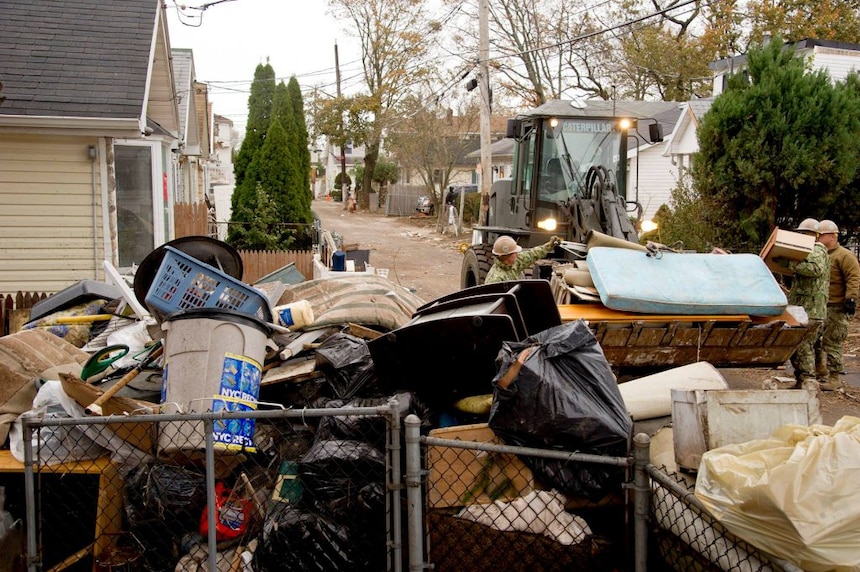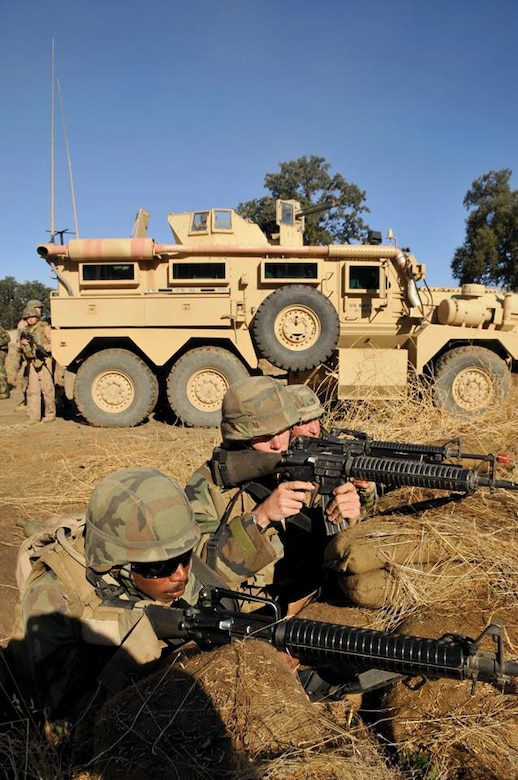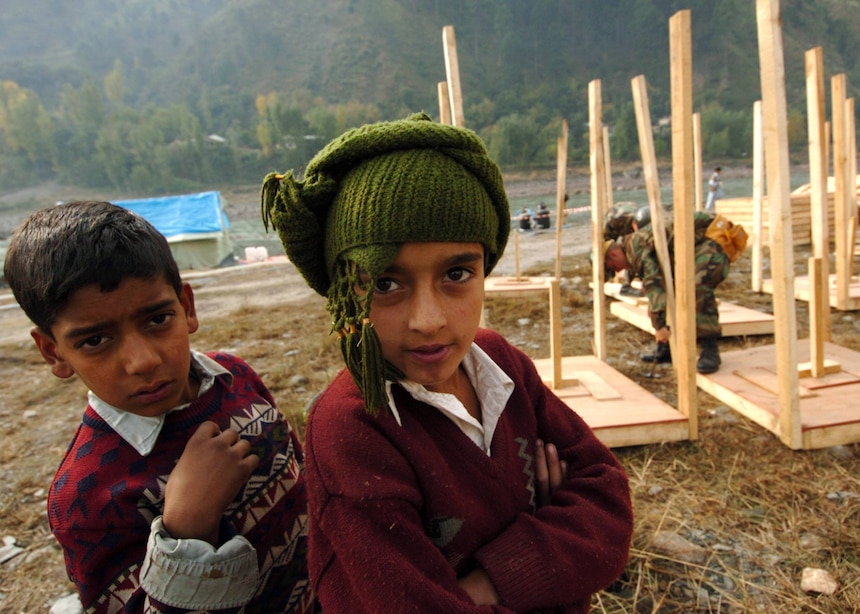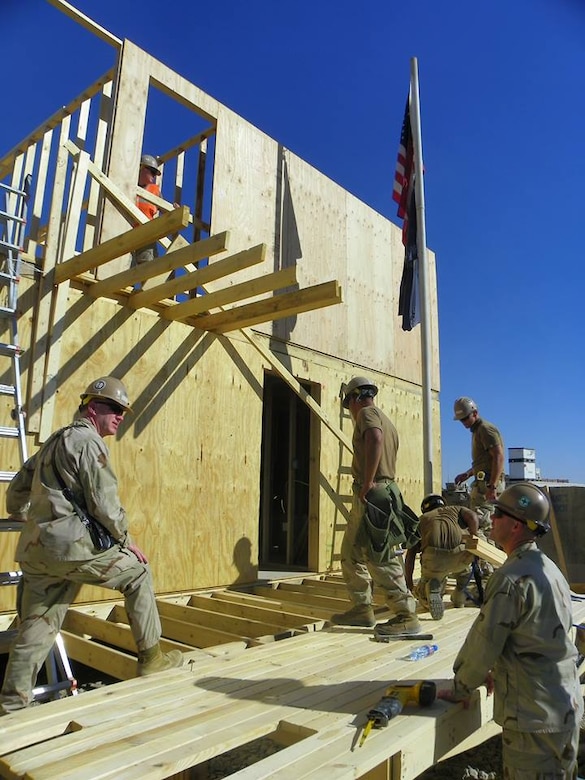Consolidated By U.S. Navy Seabee Museum, Naval History and Heritage Command
November 6
1942: 40th NCB (Naval Construction Battalion) commissioned at Camp Endicott, Davisville, Rhode Island.
November 7
1971: Seabees of Naval Mobile Construction Battalion (NMCB) 5 arrived at their homeport of Port Hueneme, California. This was the last full battalion to depart from Vietnam. Their departure marked the end of a significant chapter in the Seabee effort in Vietnam, an effort which began at Chu Lai in 1965 and resulted in the construction of approximately $200 million worth of facilities in support of U.S. forces.

November 8
1942: Seabees encountered their first combat in the European theater of operations when they landed with the assault forces on the beaches of North Africa. The Seabees built facilities at Oran, Casablanca, Safi, and Fedala. Later, as the American Army moved across Africa toward Tunisia and the final showdown with the Germans, the Seabees built staging and training areas along the coast as far as Arzeu. On the west coast of Africa, the Seabees built a huge Naval Air Station in Port Lyautey, Morocco and supplementary air and supply bases at Agadir and Casablanca. Through these later ports poured materials, men, and equipment needed for the coming invasion of Sicily and the Italian mainland.
1944: 13th Naval Construction Regiment (NCR) inactivated.
1945: 20th Naval Construction Battalion (NCB) inactivated on Okinawa.
1969: Seabee Teams 1113 and 1114 transferred to NMCB 3 to become Seabee Teams 0315 and 0316, respectively, due to disestablishment of NMCB 11.
1971: Seabee Teams 1021 and 1022 commenced Seabee Team Training.
[caption id="attachment_17441" align="alignnone" width="483"]

2011: Seabees assigned to Naval Mobile Construction Battalion (NMCB) 40, defended their camp in a simulated firefight as part of their final evaluation during a training exercise at Forth Hunter Liggett, California. NMCB 40 was participating in its final field training exercise and evaluation before their upcoming U.S. Pacific Command deployment in November. The battalion was scheduled for decommission at the conclusion of their deployment in September 2012. (Courtesy of U.S. Navy Seabee Museum)
November 9
1945: 26th Special NCB inactivated on Oahu, Hawaii.
1965: NMCB 4 transferred to Commander, Naval Construction Battalions, U.S. Pacific Fleet (COMCBPAC) from Commander, Naval Construction Battalions, U.S. Atlantic Fleet (COMCBLANT).
1970: NMCB 3 main body flights consisting of three passenger flights and two cargo flights departed Port Hueneme, California and arrived at Camp Haskins South, Republic of Vietnam (RVN).
1971: 3rd Naval Construction Brigade officially disestablished.
November 10
1945: 137th NCB inactivated on Okinawa. 16th Special NCB inactivated on Guam.
Mid-November
2001: The call came for NMCB 133 to provide direct support for Operation Enduring Freedom and an Air Det Heavy was stood up as U.S. Marine led coalition force for offensive operations in Afghanistan. Organized under Brigadier General Mattis, the 1st MEB commander out of Pendleton, the Air Det Heavy went in country on 28 November as Task Force 58.5 with the Operations Officer as the Air Det Heavy OIC being a direct report to the commanding general. The Air Det was organized in two elements, the small lead element of 27 Seabees to go to Forward Operating Base (FOB) Rhino to maintain a dry lake airstrip and provide rudimentary contingency construction and the remainder of the Air Det Heavy to follow on into Kandahar to help establish a permanent operating base by providing Rapid Runway Repair (RRR) and contingency construction. 2005: NMCB 3 turned over with NMCB 133 in Fallujah Iraq and redeployed to Kuwait in order to setup mainbody operations in Kuwait to support of Combined Forces Land Component Command (CFLCC) and Area Support Group, Kuwait. NMCB 3 established the new Main Body deployment site from scratch while integrating over 145 personnel from NMCB 21, and 139 personnel from the Army s 63rd Construction Support Element. NMCB 3 worked with the Army to develop a master plan for what is now the Seabee main body deployment site. While deployed to Kuwait, NMCB 3 successfully completed over 20,000 man days of tasking, and completed 58 tasked projects in direct support of the CFLCC mission.
November 11
1962: During Typhoon Karen which struck Guam, winds reached 142 miles per hour with gusts of up to 200 miles per hour. The typhoon injured hundreds of people and left nine dead. Damage to U.S. defense facilities reached $200 million. NMCB 5, stationed on Guam at the time of the typhoon, aided in restoring the wrecked island. The shops and much of the equipment of the Seabees had been destroyed, but with what they still had, they worked hard and fast. They erected plywood housing and canvas tents to shelter the homeless, cleared debris from roads and streets, and rebuilt bridges. Seabee electricians raised 1,000 new power line poles and restored light, power, and communications to the island. NMCB 11 arrived in December and a massive reconstruction program was started. By early 1963, Guam s naval facilities began to look normal again. 1968: An unnamed street in Gulfport, Mississippi was named Engram Drive in honor of Capt. Robert C. Engram, Gulfport Seabee Center commanding officer. [caption id="attachment_17510" align="alignnone" width="618"]

2005: Children living at the Thuri Park Tent Village lived in donated tents in Muzaffarabad, Pakistan. U.S. Navy Seabees assigned to Naval Mobile Construction Battalion Seven Four (NMCB-74), built and installed latrines for displaced families. The United States was participating in a multi-national assistance and support effort led by the Pakistani Government to bring aid to the victims of the devastating earthquake that struck the region on 8 October 2005. (Photo courtesy of U.S. Naval Seabee Museum)
November 12
1942: 43rd NCB activated at Camp Endicott, Davisville, Rhode Island. 1942: Camp Peary, Williamsburg, Virginia established. 1945: 111th NCB inactivated on Samar, Philippines. 1967: NMCB 5 advance party arrived at Camp Barnes, RVN. 1969: Underwater Construction Team (UCT) 1 was established in the 21st NCR as a unit to conduct training and to perform construction, as required, to support Navy underwater projects. [caption id="attachment_17508" align="alignnone" width="492"]

2010: Captain John DeBerard, commanding officer of Naval Mobile Construction Battalion (NMCB) 18, and Chief Equipment Operator Joseph Zaleski conferred about safety as Seabees assigned to NMCB-18 constructed a Southwest Asian Hut onboard Kandahar Air Field, Afghanistan. NMCB-18, a reserve component battalion from the Pacific Northwest, was operating in the RC South Region of Afghanistan. (Photo courtesy of U.S. Naval Seabee Museum)